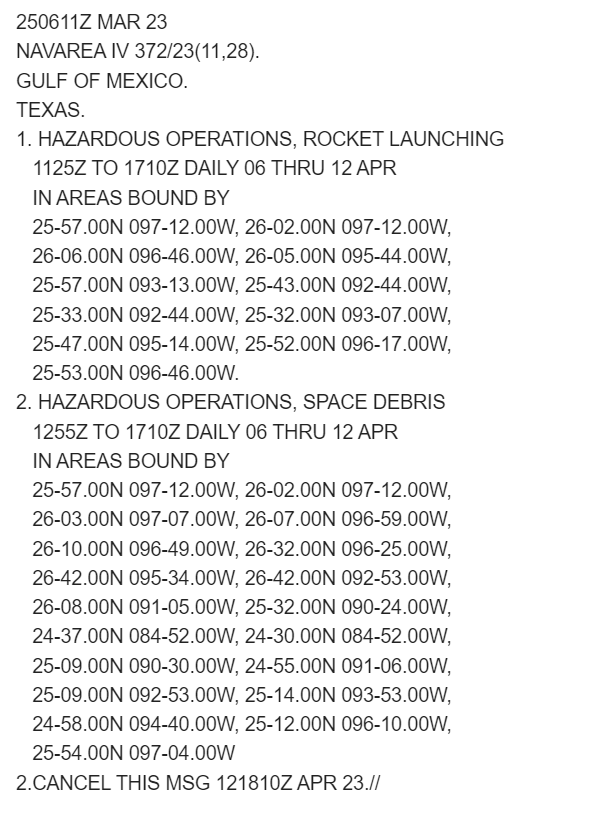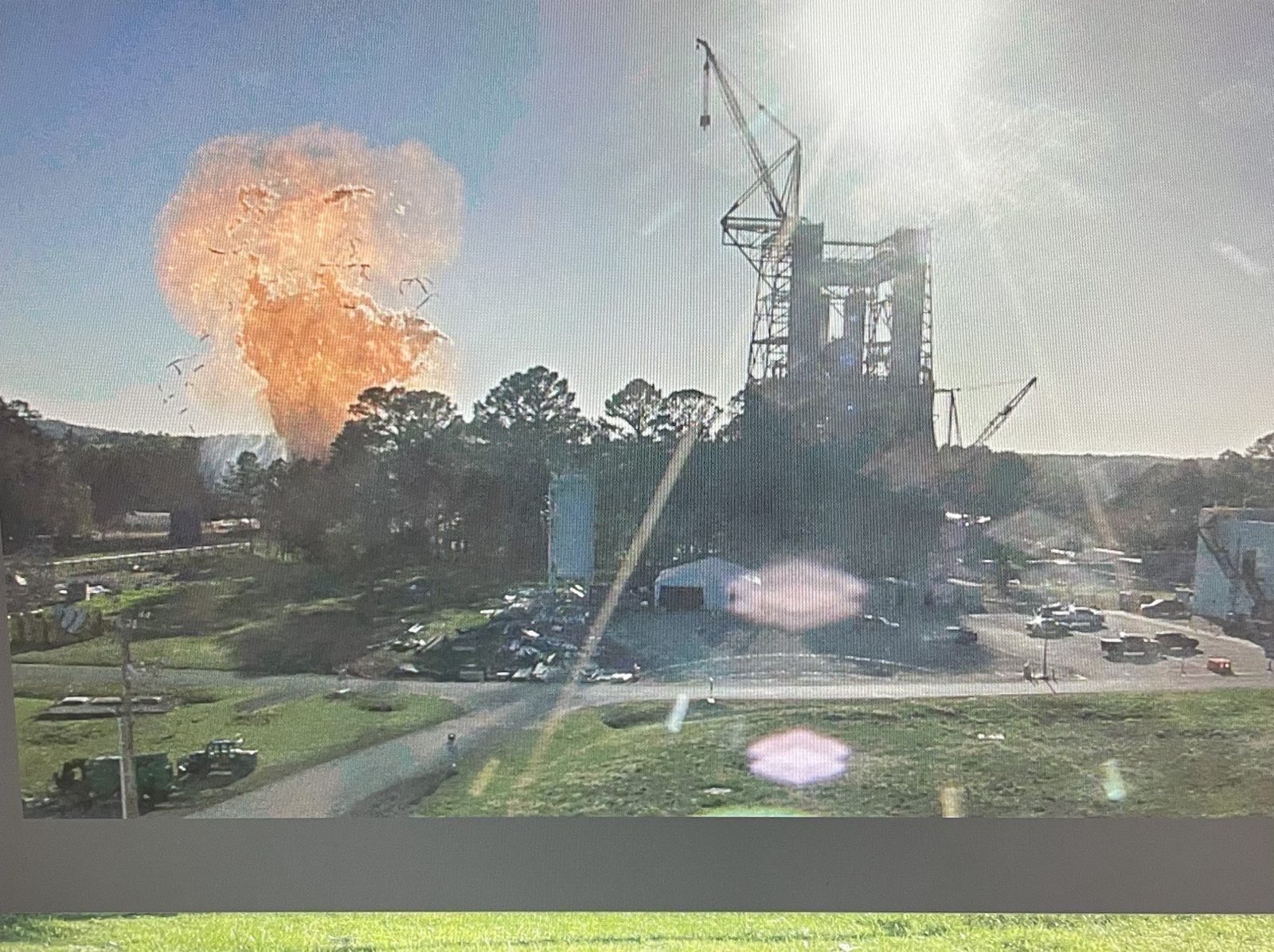There will be a lot of fallout and shutdowns in non-traditional space launch in the next couple of years.
Which will be small potatoes compared to the shakeout coming in the burgeoning AAM / eVTOL space. Lotta true believers (and a couple of the inevitable scamsters) burning through early stage funding rounds in a world where late stage funding is now far more scarce than two years-ago’s predictions would have led one to expect now. Gonna be a bloodbath.
The decade of ultra-low interest caused a lot of ‘malinvestment’. A lot of ventures are going to fail, and a lot of Silicon Valley companies that went on hiring sprees in the last few years are either laying off most of those new hires, or have already laid them off.
And yeah, all those stupid ideas that got huge funding in the past decade are going to go under now that the money has dried up. Virgin Hyperloop is gone, and now Virgin Orbit. Hyperloop One is gone. Arrivo, another hyperloop startup, is also gone now.
And all those low-interest T-Bills and bonds used to fund extravagent spending are now clogging up banks, pension funds, etc. Every time interest goes up a point, another $100 billion or so in unrealized losses accrues to all those debt instruments. Banks are sitting on $600 billion in unrealized losses from bonds alone, from what I recall.
But the next shoe to drop is probably commercial real estate, and the mortgage-backed-securities that funded their purchase. The fed itself is one of the biggest real estate holders around now, and they are going to lose a lot of money that either have to be printed and cause more inflation, or extracted from the federal budget without adding to the deficit.
But sometimes a recession or credit tightening is a good thing. These companies wasted billions of dollars, and if interest rates had not been close to zero some of them would never have started in the first place. Many of them were just grifters holding out their hats to catch the raining money.
Not sure I understand this. The Fed has a peculiar status. It’s a for-profit corporation that’s 100% owned by the US Government. It doesn’t get any funding from the federal budget. Instead, it pays the Government a dividend. So if it loses money, then there’s no dividend that quarter. OK, not getting a dividend will increase the deficit, but that dividend is usually small in comparison to the total budget.
The $80 billion is just the cash it has to cough up. The Fed is also sitting on 1.1 trillion in unrealized losses from its other holdings, including the real estate I mentioned.
The Fed claims that it will make this money back in the future. But then, the fed claims a lot of things that aren’t true, like inflation being temporary. And until recently, that it would never lose money.
If interest rates go up more, all these numbers get larger.
Can we not hijack a space exploration thread with Sam’s obsession about interest and government debt please? It’s definitely bordering on political and this is not a political thread. Thanks.
Yeah, I was answering the previous message and forgot we were in the space thread. Sorry about that.
There are daily marine notice windows running from April 6th to April 12th. Maybe just placeholders as the FAA licence is still to be granted.
Looks like we could be getting close!
In other news, this is an interesting space venture:
Basically, they are building a small, cheap, unmanned, suborbital reusable sounding rocket for small payloads. It’s a pretty good idea, if they can find a market for it.
To clarify:
“It’s only going to be capable of carrying a few kilograms of payload,” he said. “So you’re not really launching anything. There’s no second stage you can carry with five kilograms. But I do think that what’s really unexplored is the suborbital market in this category.”
What Powell means is that there is currently no capability to do regular, repeatable research in the atmosphere from about 30 km up to 100 km. With the Mk-II Aurora, the company seeks to be able to fly the vehicle twice a day, offering a platform for applications such as environmental research in the mesosphere and thermosphere.
“Above 30 km is too high for balloons and too low for satellites,” he said. “Some researchers refer to it as the ignore-o-sphere. We know it has large implications on climate models and weather models. So there is theorized to be a lot of value in understanding this part of the atmosphere better. So we’ll probably just start sticking some pretty basic data gathering payloads onboard just because they don’t weigh very much.”
The immediate aftermath of a structural test of the upcoming Centaur V (upper stage for the Vulcan rocket).
Eh, it’s fine. That’s what tests are for. This was just a little more energetic than usual.
Remember, it’s not an explosion, it’s a Rapid Unscheduled Disassembly.
JUICE (JUpiter ICy-moon Explorer) has launched:
Brian
Starship launch officially scheduled for Monday, April 17. 2.5 hr launch window opens at 8am.
Cool!
I’ll be flying from Central America to Texas during the launch window. If they’re delayed, I may be too, or rerouted over the Mexican mainland to stay out of their way.
If they go early in their launch window, which I expect is their plan, they’ll be long since splashed down or blown up by the time I get near where they were.
But if “stuff” holds them up for a couple hours. … I’ve seen two Shuttle launches and one SpaceX Falcon launch from the air. It’d be an awesome treat to see Starship’s maiden voyage from altitude. That’s a once in a career experience.
“SpaceX’s satellite constellation can provide unprecedented volumes of telemetry and enable communications during atmospheric entry when ionized plasma around the spacecraft inhibits conventional telemetry frequencies. These tests will demonstrate its ability to improve the efficiency and safety of future orbital spaceflight missions,” the filing reads.
Outstanding!

